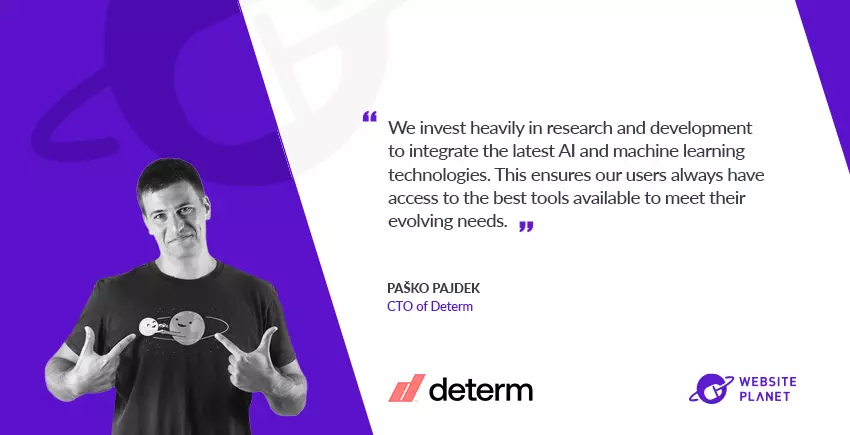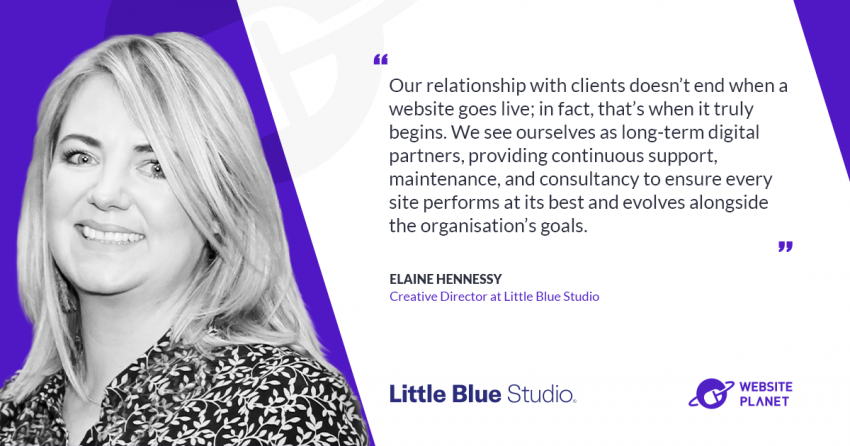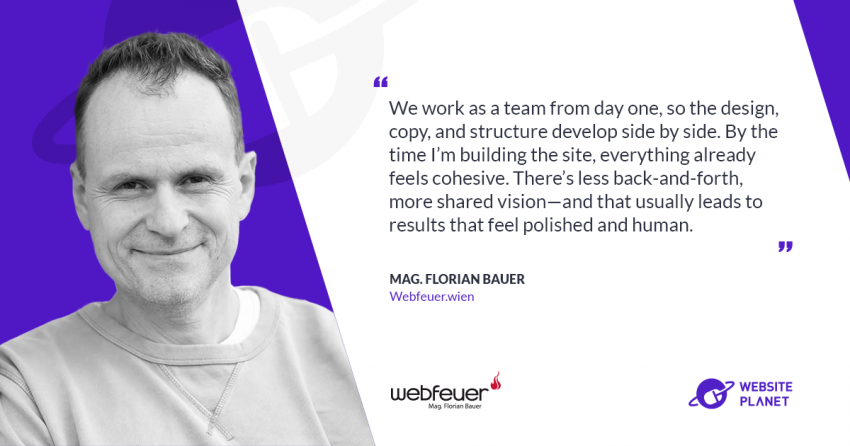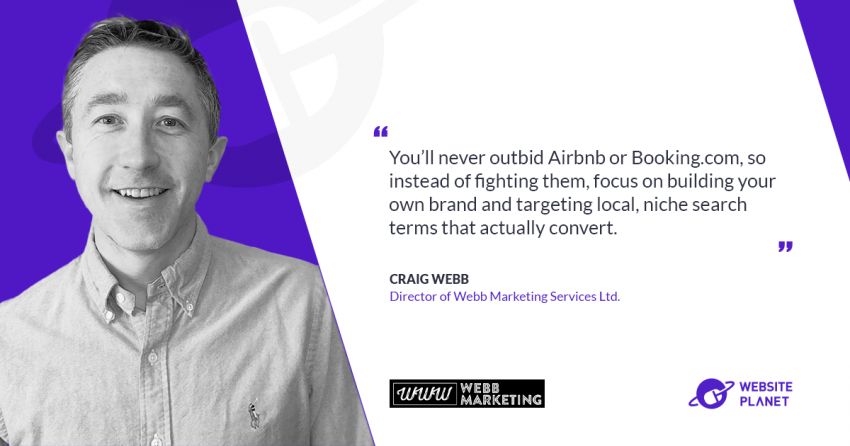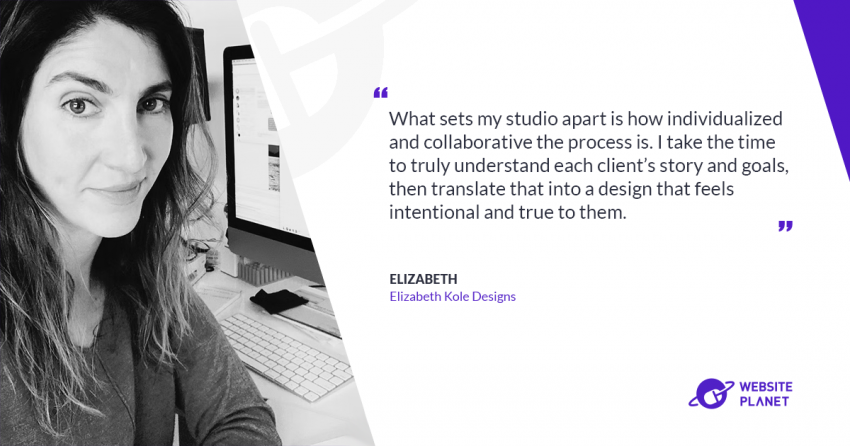Welcome to another interview by Website Planet. Bringing you insights on how the best companies are solving the current challenges in their industry, and how they are planning ahead for the future.
Our guest today is Paško Pajdek, CTO of Determ, a media monitoring solution trusted by over 4000 PR and communications professionals to track, evaluate, and report campaign impact in one place.
We looked at why most PR professionals are still unable to track and measure the impact of their PR campaigns effectively with their systems and tools, and what is a cheaper, faster and more accurate way to do that without breaking the bank on ridiculously expensive enterprise software.
What unique challenges are people in your industry facing right now?
One of the biggest challenges PR and communications professionals are facing is manual monitoring and reporting, which is not only time-consuming but also often fails to capture the full impact of PR efforts. Without a comprehensive view, it’s difficult to gauge the effectiveness of campaigns accurately.
“We spent so much time using Google trying to find where we were mentioned online. It was one of the most consuming tasks for us but we soon realized that that was a big waste of time, because media monitoring tools exist.”
Ivona Mrvoš, Marketing Manager at Include
Staying informed is another significant challenge. The fast pace of news cycles means PR professionals must constantly stay on top of relevant information and mentions. Missing a crucial piece of news or feedback can have serious consequences for a brand’s reputation.
Moreover, measuring PR impact and demonstrating value to stakeholders is increasingly tough. According to our recent survey, 79% of PR professionals prioritize proving value through media coverage and reach, emphasizing the importance of securing placements and reaching a wide audience.
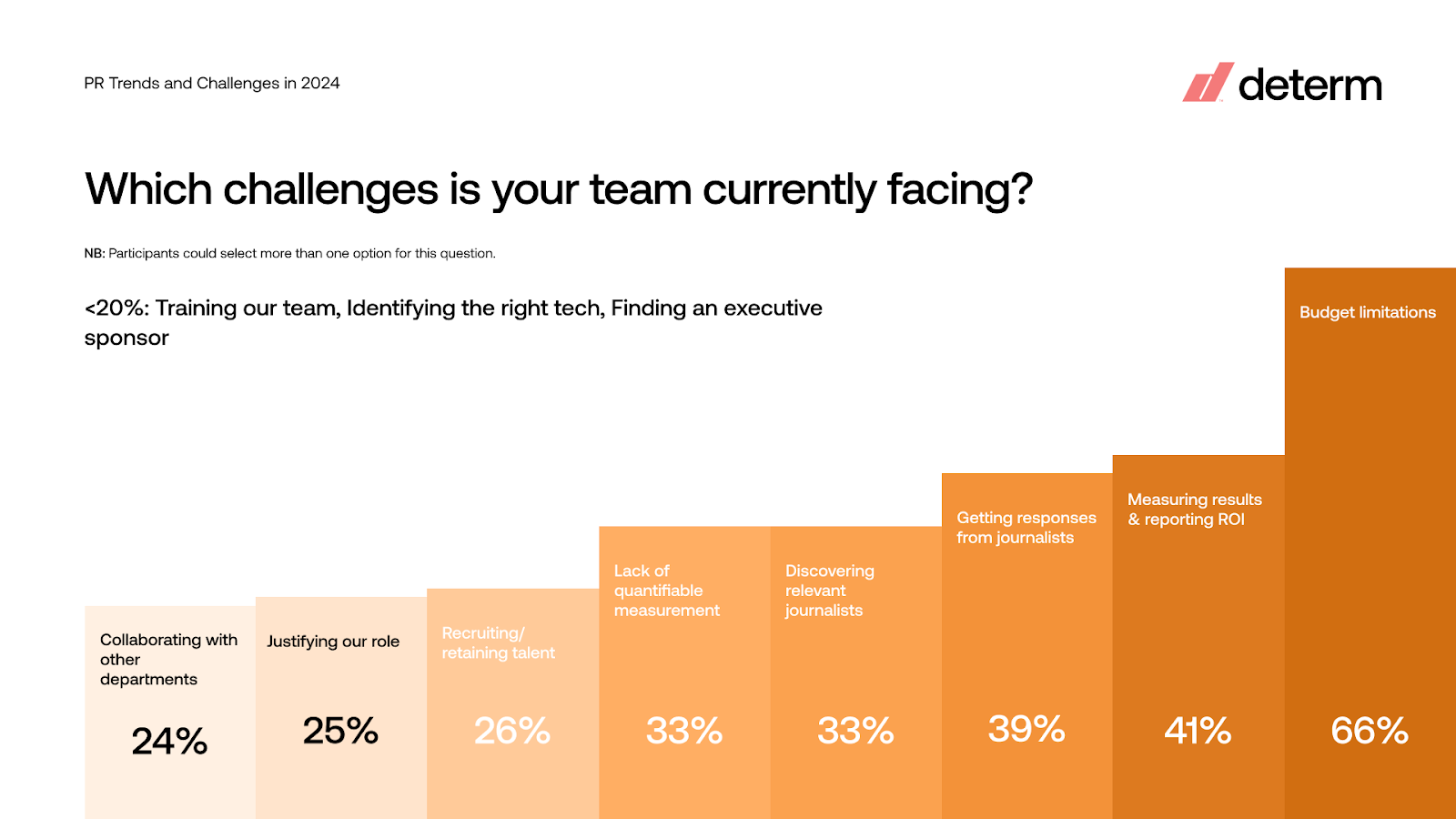
Without precise metrics and easy-to-understand reports, justifying PR budgets becomes challenging. This lack of clarity can lead to missed opportunities and a lack of trust in PR efforts. For example, if a campaign’s success isn’t clearly demonstrated, it might result in reduced future funding.
In fact, budget limitations are the number one challenge for 66% of respondents in our survey, followed by measuring results and reporting ROI at 41%.
How effective are the current methods for solving these issues?
Many PR professionals still rely on DIY methods, such as manual tracking using spreadsheets or basic tools like Google Alerts. While these methods provide some level of insight, they are far from ideal.
Manual methods are incredibly time-consuming, often requiring hours of work that could be better spent on strategic planning and execution. These basic tools also often miss important mentions or provide inflated metrics that do not accurately reflect the reach and impact of PR efforts.
For instance, many tools use generalized data from sources like SimilarWeb, which can result in inflated reach numbers. This misrepresentation can make it difficult to assess the true impact of PR activities.
Some enterprise solutions offer more comprehensive features but come with high costs and complexity. Many PR professionals find these solutions overwhelming and impractical, especially for smaller teams or agencies with limited budgets. The complexity of these tools can lead to underutilization, where users only scratch the surface of available features, missing out on their full potential.
What’s a better way in your opinion to fix these issues?
A more effective approach to addressing these challenges is through a streamlined, accurate, and cost-effective solution like Determ. Our platform offers comprehensive monitoring, providing real-time tracking of media coverage across multiple platforms, ensuring no mention is missed. This saves valuable time and resources.
Our proprietary technology delivers accurate estimates of article reach and impact, enabling PR professionals to present their reports with confidence. Determ’s simple, clean interface and powerful analytics dashboards make it easy to generate detailed reports and gain valuable insights quickly.
🎯Determ monitors over 100 million sources 24/7, and 78% users find it better in coverage and data accuracy than competitors.
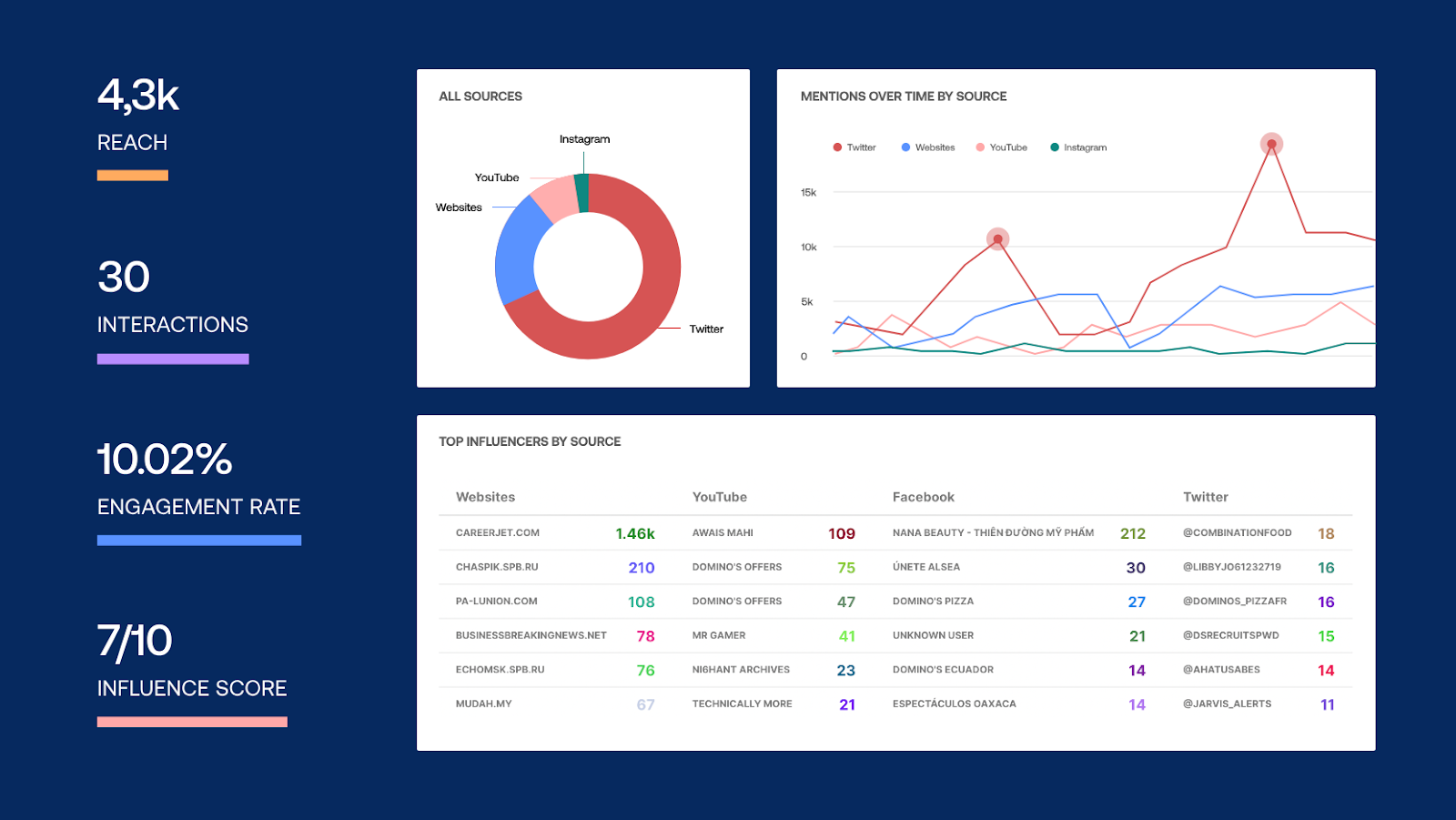
Moreover, Determ’s alert system provides timely notifications of potential crises, allowing PR professionals to respond promptly and effectively. This proactive approach helps maintain a positive brand reputation and mitigate any negative impacts quickly.
“Numerous times, something happened, and we were the last to know. Now, we are timely informed of everything. We check Determ every day, and if something important occurs, we automatically get a Spike alert and can react immediately.”
Martina Crnčević, Marketing and Web Associate at Zadar Tourist Board

Looking ahead 5 to 10 years, what new technologies and trends will have the most significant impact on the issues we talked about?
Looking ahead, advancements in AI and machine learning will profoundly impact PR and communications.
These technologies will enhance real-time analysis, providing more accurate and immediate insights into media coverage and sentiment. In addition, it will play a huge role in assisting in content creation. According to our study, 82% of PR professionals currently view AI as most beneficial in content creation and writing assistance, indicating its significant role in improving efficiency and quality.
Predictive analytics will become more prevalent, helping PR professionals foresee trends and potential crises before they occur, and allowing for proactive management.
For example, AI-powered tools will be able to analyze patterns in media coverage and social media activity to predict potential PR issues. This capability will enable PR teams to prepare responses and strategies in advance, reducing the risk of brand damage.
Additionally, we’ll see more personalized reporting tools. These tools will allow PR professionals to tailor insights to meet the specific needs of different stakeholders, providing a more customized and impactful way to present data.
What should people do to stay up to date and adapt to these changes? What will you do in this regard?
To stay up to date, PR professionals should embrace technology and regularly evaluate and adopt new tools that can enhance their workflow and provide better insights.
Continuous learning is crucial; staying informed about industry trends and advancements through webinars, conferences, and professional networks will be key.
At Determ, we’re committed to staying at the forefront of these changes by continuously improving our platform. For instance, when ChatGPT was released, we immediately began researching and developing Determ’s AI assistant, Synthia. It took about a month for Synthia to be released to our users, which attests to our commitment to constant progress.
We invest heavily in research and development to integrate the latest AI and machine learning technologies. This ensures our users always have access to the best tools available to meet their evolving needs. We also offer regular training sessions and resources to help our users make the most of these advancements.
Where can we get in touch with you?
Website: https://www.determ.com/get-in-touch-here/
LinkedIn: https://www.linkedin.com/in/paskopajdek/
